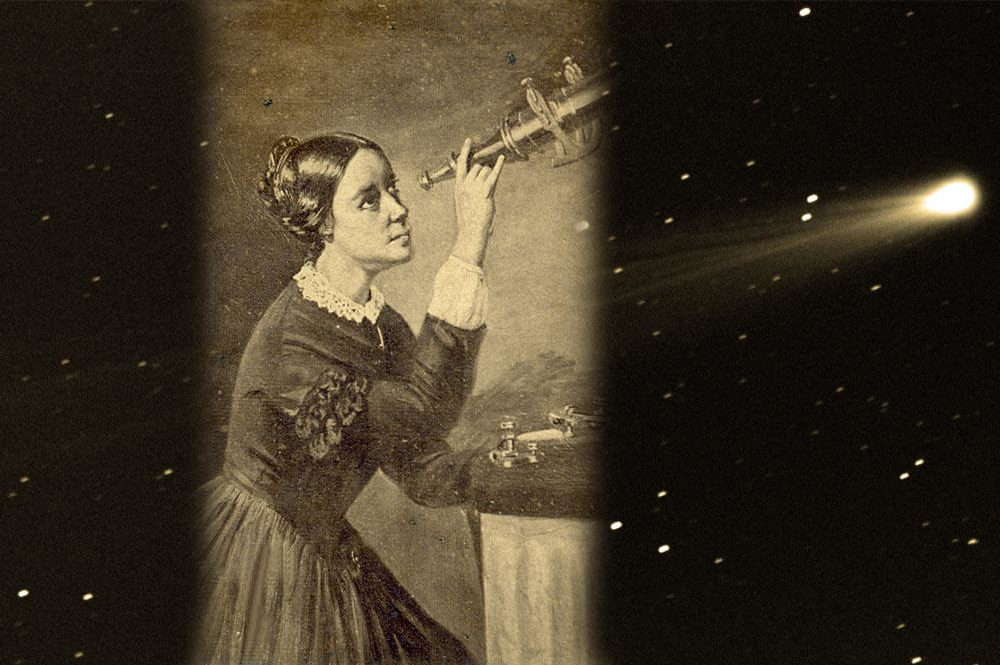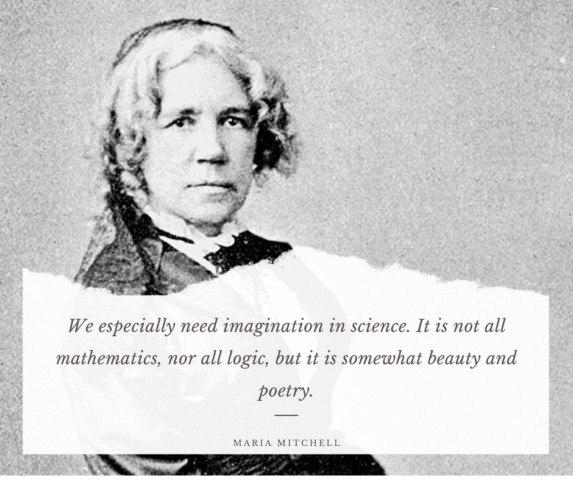
The astronomer and educator, Maria Mitchell, was born in 1818 and grew up in Nantucket, Massachusetts. Raised in a Quaker family of ten children, she and her siblings were encouraged to learn and question by their astronomer father and librarian mother. This climate of inquiry and scientific training led Maria to become the first professional female astronomer in the United States.
Maria was raised in a community that believed in equal education for girls and boys. Her father encouraged her interest in astronomy from a young age. She worked at the Nantucket Atheneum library from 1836 to 1856 while studying the sky at night.
 In 1847, while scanning the skies with her telescope from the roof of her father’s place of business, Maria discovered what she was sure was a comet. It turned out that she was right, and what she had spotted was, in fact, a new comet, previously uncharted by scientists. The comet became named “Miss Mitchell’s Comet,” with the formal title of C/1847 T1.
In 1847, while scanning the skies with her telescope from the roof of her father’s place of business, Maria discovered what she was sure was a comet. It turned out that she was right, and what she had spotted was, in fact, a new comet, previously uncharted by scientists. The comet became named “Miss Mitchell’s Comet,” with the formal title of C/1847 T1.
The discovery and breakthrough of her work brought her recognition and respect in the scientific community; in 1848, she became the first woman to be named to the American Academy of Arts and Sciences. In 1850, she was elected to the American Association for the Advancement of Science. She also co-founded the Association for the Advancement of Women.
From 1865 until she retired in 1888, she served as a professor of astronomy at Vassar College in upstate New York. She inspired a lot of students and was considered an model educator. She spearheaded the daily practice of photographing sunspots, and was the first to notice that they were whirling vertical cavities rather than clouds, as had been earlier believed. Comets, nebulae, double stars, solar eclipses, and the satellites of Saturn and Jupiter were other topics she studied.
After she died in 1889 she was buried next to her parents in Nantucket’s Prospect Hill Cemetery. To honor our nation’s first female astronomer, Nantucket’s observatory was named the Maria Mitchell Observatory. A World War II ship, the SS Maria Mitchell, and a crater on the moon (“Mitchell’s Crater”) were also subsequently named for her.
A life-long advocate for women in science and education, Maria was a celebrated women’s rights champion. Her lasting impact on astronomy, women in the sciences, and education is further described in The Maria Mitchell Association (MMA).
Sources: https://scientificwomen.net/women/mitchell-maria-70
https://www.womenshistory.org/education-resources/biographies/maria-mitchell